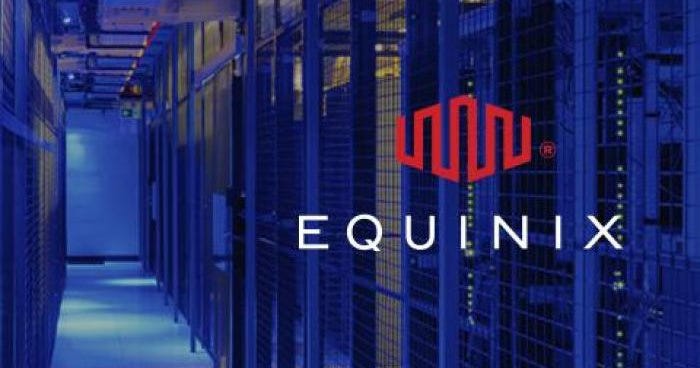No recommendation or advice is being given as to whether any investment is suitable for a particular investor or a group of investors, and is for informational purposes only. It should not be assumed that any investments in securities, companies, sectors or markets identified and described were or will be profitable. No recommendations to buy, sell or hold are being made rather we intend to express what opportunities are in the market at any point in time. Full disclaimer at the end of the article.
In July 2025, the U.S. Senate passed the One Big Beautiful Bill, a sweeping piece of legislation aimed at overhauling tax policy, energy funding, and national infrastructure strategy. While headlines are centered on income brackets and border policy, hidden within its 870 pages are provisions that will deeply influence the future of one of the most critical sectors in the U.S. economy: AI data centers. These facilities are the backbone of artificial intelligence, consuming vast energy and capital to train and deploy frontier models. Their importance is only growing. By 2030, AI data centers may consume up to 10% of the world’s electricity. This legislation arrives at a pivotal moment in the industry’s development and will likely determine where, how fast, and how competitively this infrastructure scales across the U.S. The stakes are enormous—not only for hyperscalers and semiconductor giants, but also for power providers, chip designers, grid planners, and the economic geography of entire states.
Tailwinds: Direct Incentives from the One Big Beautiful Bill
Permanent Full Expensing of Capital Investments (Section 168(k))
The bill makes 100% bonus depreciation permanent, allowing businesses to immediately deduct the full cost of qualified capital equipment, including servers, GPUs, networking gear, and power and cooling infrastructure.
Hyperscalers and colocation providers can now front-load depreciation on billions of dollars in AI-specific hardware. This accelerates ROI and incentivizes domestic expansion of compute-intensive infrastructure. It disproportionately benefits capital-intensive operators like Amazon AWS and Digital Realty. It may also spark a wave of regional investments from firms seeking to optimize for tax treatment and capital efficiency.
Restoration of R&D Expensing (Section 174 Amendment)
The bill reverses the 2017 TCJA change that required five-year amortization of domestic R&D. AI firms can now immediately deduct R&D expenses through 2029.
This supports chip designers, model developers, and infrastructure optimization teams. Nvidia, Synopsys, and AMD stand to benefit from enhanced liquidity, and smaller startups can now scale innovation more affordably. The policy unlocks near-term cash flow, reducing risk and encouraging earlier experimentation in areas like new memory interfaces, packaging standards, and training optimization tools.
Preservation of Section 199A Pass-Through Deduction
The bill makes the 20% qualified business income deduction permanent for pass-through entities, including many smaller infrastructure firms and data center REITs.
Colocation-focused REITs like Equinix and Digital Realty retain favorable tax treatment for shareholders, reducing equity cost of capital. Smaller engineering firms and regional data providers operating under LLC structures also benefit. This strengthens the viability of niche infrastructure providers competing for AI workloads outside the Big Tech oligopoly.
$500 Million AI Infrastructure Fund (Title VI, Sec. 6103)
A newly established fund offers $500M in grants to states and research institutions to support AI infrastructure deployment.
This unlocks early-stage funding for distributed AI capacity in grid-rich or underserved regions. Beneficiaries likely include university-aligned facilities in Indiana, Iowa, and the Mountain West. Encourages diversification of AI capacity beyond coastal hubs. It also sets the stage for AI infrastructure as an economic development tool for states seeking to attract high-wage, low-emissions digital industries.
AI Regulation Moratorium Reduced to 5 Years (Title VII, Sec. 7202)
Originally proposed as a 10-year ban, the final bill includes a 5-year federal preemption on new state-level AI regulations.
This provides a medium-term window of regulatory certainty for developers and infrastructure investors. It allows construction and deployment to proceed without local interference through 2030. It may also incentivize faster buildout before fragmented regulation reemerges. States with aggressive regulatory postures (e.g., California, New York) are temporarily constrained, leveling the playing field for other geographies.
Headwinds: Frictions Introduced by the One Big Beautiful Bill
Phase-Out of Renewable Energy Credits by 2027 (Sections 45 & 48)
The bill accelerates the sunset of the Production Tax Credit (PTC) and Investment Tax Credit (ITC). Projects must begin construction by the end of 2027 to qualify. New criteria for “clean firm capacity” are under development but not yet defined.
This complicates the economics of post-2027 renewable projects, raising power procurement costs for AI data center operators. Companies like Microsoft and Meta with 100% renewable pledges will need to pay a premium or delay timelines. Uncertainty around “clean firm” eligibility introduces planning risk for future solar-plus-storage deployments.
Rising Industrial Power Prices (Title II, Energy Provisions)
While the bill does not set power prices, analysts expect prices to rise due to the elimination of renewables incentives and a lack of new firm dispatchable capacity.
Data center OpEx will likely increase, particularly in high-load regions. New construction in congested metros like Ashburn and Santa Clara could become uneconomical. Margins may narrow unless operators vertically integrate energy sourcing. Users with long-term power purchase agreements will be shielded, but others may face volatile grid exposure.
No Federal Override of Local Siting and Permitting Rules (Title VII, Sec. 7202)
The bill preserves state and county authority over AI data center approvals. A proposed override mechanism was removed in committee.
Developers face ongoing permitting risk and project uncertainty. Activist local governments can block or delay deployments, even if federally funded. High-visibility projects in Oregon and Virginia have already encountered similar resistance. Inconsistent zoning rules and environmental reviews will continue to hamper national deployment strategies.
Mismatch in Grid Timing and Deployment Needs (Title V, DOE Loans)
The bill prioritizes DOE loan guarantees for baseload fossil plants but offers no timeline or permitting reform for clean grid infrastructure.
Fossil-based projects take 4–6 years, longer than the average data center build cycle. This gap delays grid-ready capacity, making temporary or on-site solutions more critical. Companies like Bloom Energy may benefit from interim demand. However, long-term grid reliability issues persist without coordinated interconnection reform.
Sunset of Federal AI Regulation Preemption Post-2030 (Implied from Title VII)
While the bill includes a five-year moratorium on state AI regulation, it does not establish a federal framework or extension path beyond that window.
This creates medium-term certainty but long-term ambiguity. Investors and builders face unclear compliance outlooks after 2030, particularly for inference-linked deployments that touch sensitive verticals like healthcare or defense. It may discourage 2029–2030 construction starts in jurisdictions likely to regulate aggressively.
Winners and Losers: Public Companies Most Affected
Winners:
Vertical: EDA and Chip Design ToolsThe restoration of R&D expensing supercharges demand for chip design automation. Companies like Synopsys and Cadence will benefit as custom AI silicon becomes a competitive moat. Startups in chiplet design, thermal-aware routing, and AI-on-AI optimization will also find increased access to funding.
Equinix (NASDAQ: EQIX)Benefits from CapEx expensing, pass-through tax treatment, and increased demand for flexible, high-density colocation. Gains pricing power as customers look to lease rather than build in uncertain regulatory climates. The company’s modular architecture also allows it to nimbly allocate capital in sync with federal incentives.
Nvidia (NASDAQ: NVDA)Indirect beneficiary of accelerated depreciation and R&D expensing. These incentives free up budget for enterprises and cloud providers to invest in new AI clusters built around Nvidia’s H100 and next-gen architectures. Nvidia also benefits from higher elasticity of demand as total deployment costs fall.
Losers:
Vertical: Clean Energy DevelopmentWith no extension of federal incentives beyond 2027, clean energy developers lose pricing advantage against natural gas and must rely more on volatile REC markets or state-level incentives. The gap between data center growth and renewable power availability may widen significantly.
NextEra Energy (NYSE: NEE)Faces direct margin compression from the accelerated phase-out of PTC/ITC credits. Its pipeline of clean energy projects targeting corporate PPA buyers may see reduced competitiveness or cancellation. Shareholder returns may suffer as project IRRs fall below targets.
Microsoft (NASDAQ: MSFT)Despite benefitting from tax incentives, its hyperscale goals are compromised by rising power prices and shrinking renewable supply. Its 2030 carbon-free target now requires costlier strategies, such as long-duration storage or nuclear offsets, that are not directly supported by the bill.
Conclusion
The One Big Beautiful Bill reshapes the playing field for American AI infrastructure. While it fuels near-term investment through favorable tax treatment and regulatory relief, it simultaneously raises longer-term uncertainty around energy access and state-level interference. Winners will be those who master both power procurement and political navigation. The next wave of AI infrastructure buildout will not just depend on silicon and software, but on timing, location, and legislative literacy. For now, the race to build the AI backbone continues—but the terrain just got more uneven.
Although we obtain information contained in our newsletter from sources we believe to be reliable, we cannot guarantee its accuracy as they are public sources. The opinions expressed here in the Focus on Risk Silicon Valley newsletter are ours, our editors and contributors and we may change without notice at any time. Any views or opinions expressed here do not reflect those of the organization as a whole. The information in our newsletter may become outdated in time and we have no responsibility or obligation to update it. Additionally the information in our newsletter is not intended to represent individual investment advice and nothing herein constitutes investment, legal, accounting or tax advice. No recommendations to buy, sell or hold are being made rather we intend to express what opportunities are in the market at any point in time. Rather it is for informational purposes.
No recommendation or advice is being given as to whether any investment is suitable for a particular investor or a group of investors. It should not be assumed that any investments in securities, companies, sectors or markets identified and described were or will be profitable. We strongly advise you to discuss your investment options with your financial adviser prior to making any investments, including whether any investment is suitable for your specific needs.
The information provided in our newsletter is private, privileged, and confidential information, licensed for your sole individual use as a subscriber. Focus on Risk reserves all rights to the content of this newsletter. Forwarding, copying, disseminating, or distributing this newsletter in whole or in part, including substantial quotation of any portion of the publication or any release of specific investment recommendations, is strictly prohibited.












